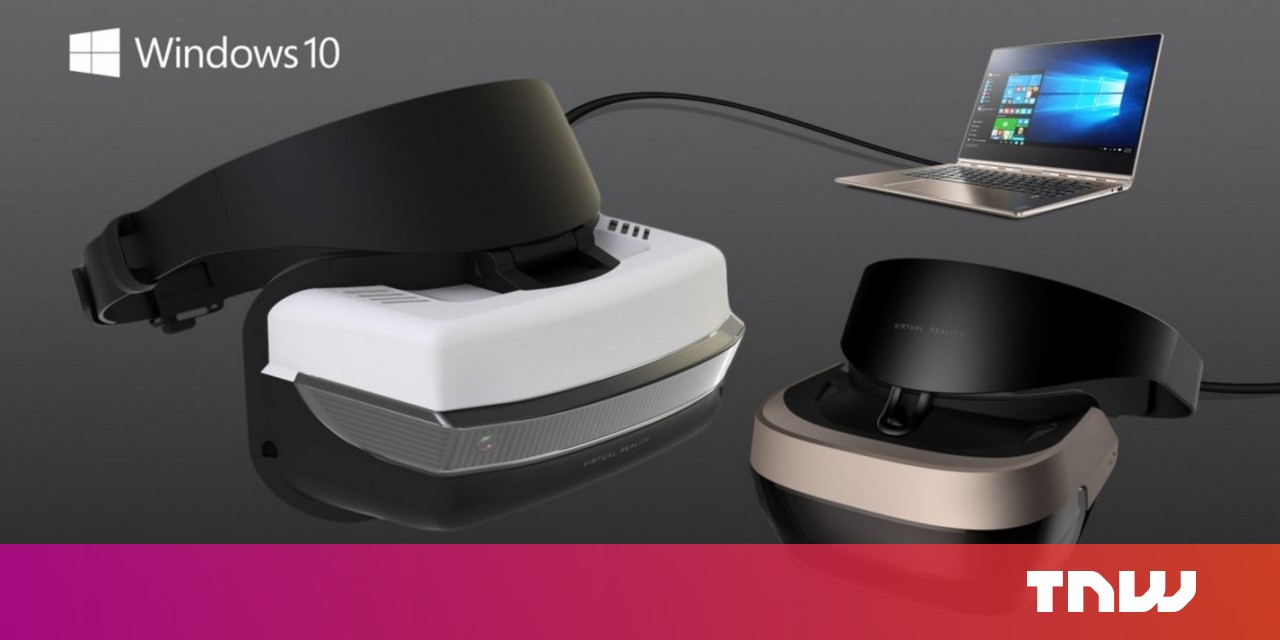Vr Low Specs
Mid-Range $700 VR Gaming PC Build. For a couple hundred more than the $500 build listed above. Oculus link with a low spec laptop. Bloodren Posts: 1. To the best of my knowledge, WMR standard is the only VR app that will work with intel integrated. Component: Recommended Specs: Minimum Specs: Processor: Intel i5-4590 / AMD Ryzen 5 1500X or greater: Intel i3-6100 / AMD Ryzen 3 1200, FX4350 or greater. For the low-end test rig—the one that would presumably induce chunk-tossing—I bypassed a minimum-spec system, and went straight to a below-spec PC: It boasted an older Core i5-3570K, 8GB of.
VR or Virtual Reality is the latest gaming fad nowadays with a rapidly expanding library, but not all of us can afford a desktop setup that has all the bells and whistles. Thankfully, there are laptops that can provide a good VR experience, and some of them won’t break the bank.
In looking at VR-ready laptops, you’ll need gaming-esque hardware specs such as 8 GB of RAM and the latest GeForce GTX dedicated GPUs (from the 980 to the 1080 line) that you can afford. You’ll also need to be able to run the most popular VR headsets like the Oculus Rift and the HTC Vive, for example without experiencing any hiccups along the way.

For processing power, you’ll need at least an i5-4590 Intel core CPU, which is already considered as one of the older generation processors. The laptop you’re buying must be able to handle all the VR peripherals in terms of ports. For example, a typical Oculus Rift setup will require three USB 3.0 ports (two USB 3.0 and a USB 2.0, ideally) and a Vive configuration will require one USB port, a Display Port 1.2 or an HDMI out 1.4.
Rendering VR graphics at a buttery smooth frame rate is no easy task, and for this reason, you’ll need a huge amount of resources to keep it at a steady clip. You won’t really need a big display since most of the viewing will be done on the VR headset, so as long as a laptop meets the specifications it shouldn’t matter if it’s 14, 15.6 or 17 inches (unless you intend to do some off-VR playing or work along the way).
Check out these cheap VR ready laptops that will fit right into your budget
Contents
| Laptop Model | Weight | Storage | GPU |
|---|---|---|---|
| CUK PE62VR | 9.26 lbs | 1 TB | GTX 1070 |
| Acer Predator Helios 300 | 5.96 lbs | 256 GB | GTX 1060 |
| Dell G3 | 5.57 lbs | 512 GB | GTX 1050i |
| HP OMEN 17 | 8.33 lbs | 1 TB | GTX 1070 |
| Lenovo Legion Y720 | 7.05 lbs | 1 TB | GTX 1060 |
| Eluktronics P650HS-G | 5.9 lbs | 512 GB | GTX 1060 |
1. CUK PE62VR Gaming Laptop
CUK is a relatively new brand that caters to those who want to join the VR crowd. The hallmark of CUK gaming laptops are efficient processors, generous memory and capable graphics cards. Leading the charge is an SSD that’s NVMe configured for optimal boot time and a 1 TB of HDD storage for the newest VR games that take up a lot of space.
The PE62VR has plenty of power under the hood. You get an i7-7700 Intel core processor that can be turbo-boosted to 3.5 GHz for a smoother VR viewing experience. The GTX GeForce 1060 GPU should more than suffice when you want to run the latest and the greatest VR titles on the market. Off VR, these specs are extremely capable of handling the most demanding tasks and workloads you can throw at it. The laptop is further complemented by the MSI Cooler Boost 4 technology to keep the temperature nice and comfortable.
The CUK gaming laptop has a 15.6 inch IPS display with 1920 x 1080 resolution and it can double as a desktop replacement if you want to save space. If you’re worried about aftersales support with a new company, don’t- the laptop is backed by CUK’s 3-year limited warranty for peace of mind.
Pros
- Great hardware for gaming
- Backlit keyboard feels nice to the touch and is ultra-responsive
- Effective cooling solution
Cons
- No GSync support
- Mediocre battery life
2. Acer Predator Helios 300 VR Ready Laptop
When Acer puts the “VR Ready” sticker on their gaming laptops, trust the brand to deliver. The Acer Predator Helios 300 looks and feels ready, its all-black chassis marked with menacing red accents exuding a serious gaming aura. In terms of performance, the laptop will not let you down.
The mean machine packs a 7th generation i7-7700HQ Intel core processor, 16 GB of RAM and a 256 GB of SSD storage. This hardware setup should breeze through most, if not all available VR apps and games in the market with plenty of power to spare. A GeForce GTX 1060 GPU with 6 GB of VRAM handles the graphics department, churning out exquisite pixels at a stable, smooth frame rate. You get top-end components in a VR laptop that costs just under a thousand bucks!
Audio is handled by two stereo speakers enhanced with the Acer True Harmony technology. The backlit keyboard is a nice plus if you’re planning to game in low-light conditions. The Helios 300 is rated to last a good 7 hours with constant use and has all the necessary ports and connectivity options for typical Oculus Rift or HTC Vive setups.
Pros
- Easy to upgrade
- Performs better than expected
- GeForce GTX 1060 graphics card
- Two-year warranty
Cons
- The display is a bit on the dim side
3. Premium Dell G3 15 3579 15.6 Inch
The G3 gaming laptop from Dell is proof that “budget” can mean a good thing. Inside the laptop shows off an 8th generation i7 Intel core processor, a 128 GB of SSD and a graphical powerhouse in the form of a GeForce GTX 1060 GPU. Suffice to say, Dell’s VR Ready laptop is all yours for a low price of just under $1000!
Boot times are negligible, thanks to the SSD tech and there’s plenty of space for your games and downloads. Also, the G3 maximizes Oculus Rift’s technical capabilities with the use of the Asynchronous Spacewarp feature.
As for connectivity, you get a spread of 2 super speedy USB 3.1 type A with PowerShare technology, a USB 3.1 gen 2 port, an HDMI 2.0, ethernet and the standard headphone and mic combo. VR games with this machine will prove to be a truly immersive experience.
Pros
- Great battery life
- Backlit keyboard
- Stylish design and VR-ready performance
Vr Specs Comparison
Cons
- The display is a bit dim
- No Mini Display or USB Type-C
4. 2018 Flagship Premium Newest HP OMEN 17
The newest HP OMEN 17 can be configured in a lot of different ways to cater to specific needs. You can choose from 16, 24 or 32 GB of DD4 RAM, a 256 GB NVMe SSD drive or an HDD, an optional optical drive or extra HDD in 1 or 2 TB variants.
The SSD option will give your whole system a noticeable boost and is an excellent complement to the GeForce GTX 1070 GPU with 8 GB of VRAM. Get these together and you can enjoy the VR experience without breaking the bank.
Off the VR screen, you can stare at the 17.3 inch IPS display that puts out a nice 1920 x 1080 resolution with anti-glare technology and support for 4K. Games, VR apps and movies will warrant a second look even when you’re not using the VR headset.
Internet connectivity can be done via hardwired ethernet or through WiFi with the HP OMEN 17’s 802.11 ac adapter. Bluetooth options ensure your headsets and mobile phones communicate with each other seamlessly for data transfers and other functionalities.
Pros
- Gaming hardware and performance
- 4K G-Sync display supported
- Backlit keyboard
Ps Vr Specs
Cons
- Lack of manufacturer instructions
- Has a rather large footprint
5. Lenovo Legion Y720
Vr Low Specs
If you’re a Lenovo fan and would like to experience the best of what VR has to offer, then the Y720 is a good starting point. It meets all minimum requirements for running both Oculus Rift and HTC Vive while having a modest price tag. Off VR, the stunning 15.6-inch display and the loudspeakers should more than suffice for entertainment and productivity tasks. The machine is powered by a 7th generation i7-7700HQ Intel core processor and a GeForce GTX 1060 GPU, which means it can handle any VR game and modern titles at Mid to High Settings.
The Legion Y720 comes with a speedy 256 GB PCIe SSD. The 4-cell non-removable battery can last you a full 5 hours’ worth of playtime on the VR headset. The whole thing weighs at 9 lbs., which means that it won’t be as portable as the other laptops in this list.
Plug a good headphone into the jack and you’ll be treated to an aural experience, courtesy of the Dolby Atmos speakers. Coupled with the smooth VR display, it makes for a truly enjoyable time!
Pros
Vr Low Specs Samsung
- Built-in Xbox wireless controller adapter
- High-speed SSD
- Dolby Atmos speakers
- Thunderbolt support
Cons
- High temperature during extended gaming sessions
- No SD card reader
- 256 GB SSD may be too small for some
6. Eluktronics P650HS-G
Eluktronic’s offering has a beefy GeForce GTX 1070 GPU with 8 GB of VRAM and a SATA III drive with 512 GB space. Granted, SATA is slower than either NVMe and PCIe but the added space should more than make up for the sacrifice in performance.
Vr Low Specs Gmc
You get none of the bloatware in other branded laptops, which is great as you won’t have to waste time uninstalling unneeded software and programs. Upgrades can be done on the SSD and RAM department, and apparently, this does not void the manufacturer warranty.
The brand can lower their price tag because they don’t spend much on marketing. What you get, though is an unparalleled performance that rivals that of high-end gaming laptops when it comes to VR apps!
Recommended Vr Specs
Pros
- Has a premium look and feel
- Large storage space
- GTX 1060 GPU
- Doesn’t get hot while VR gaming

Cons
- The fans can get noisy during extended gaming sessions
- Has a bit of backlight bleeding